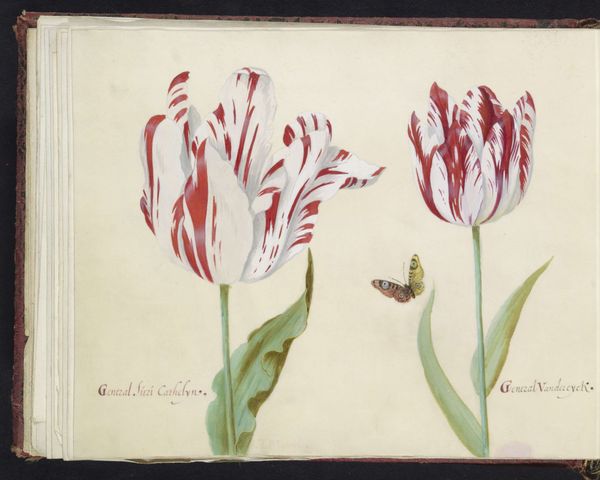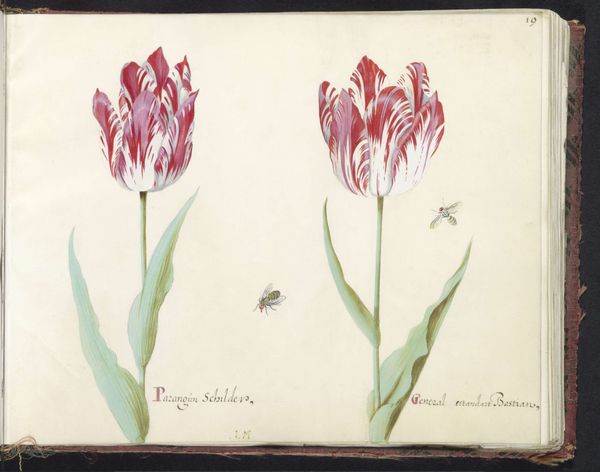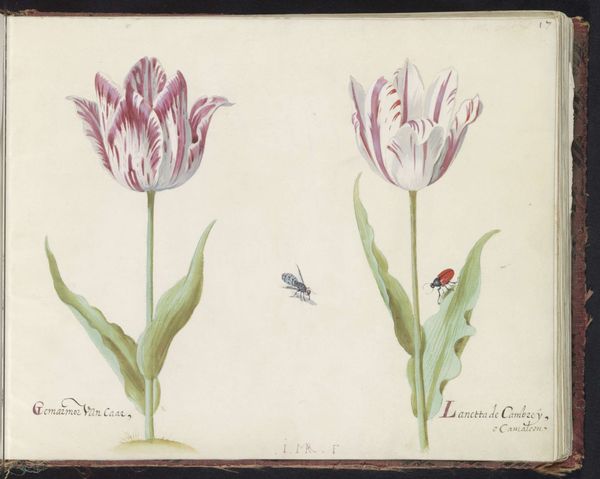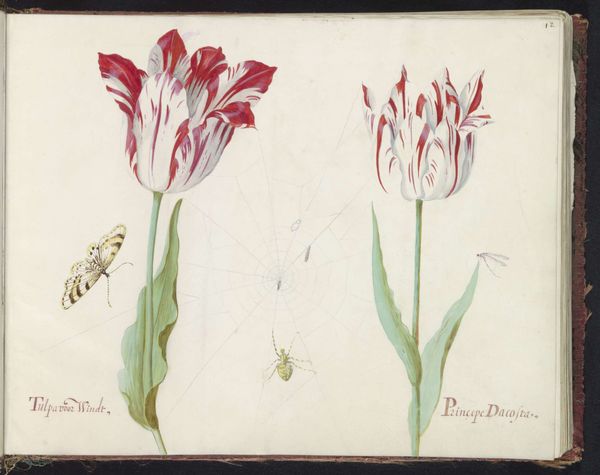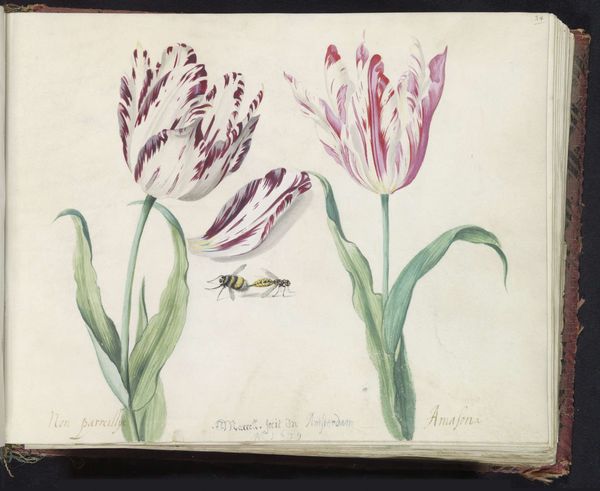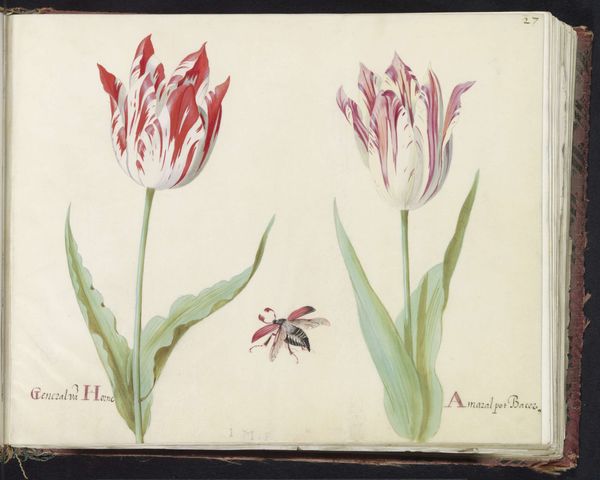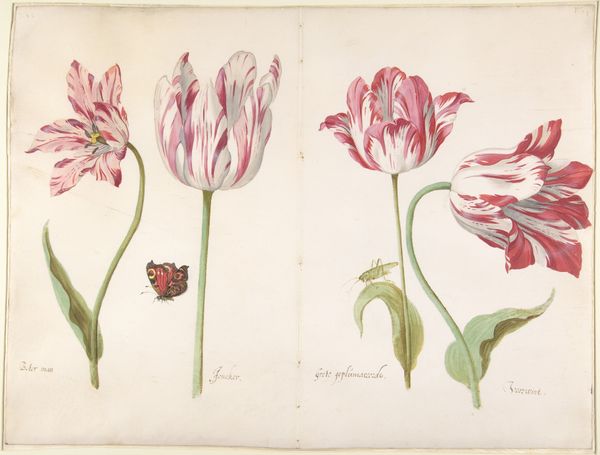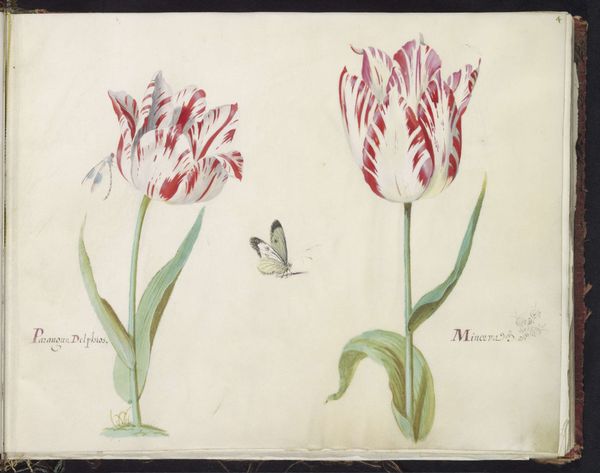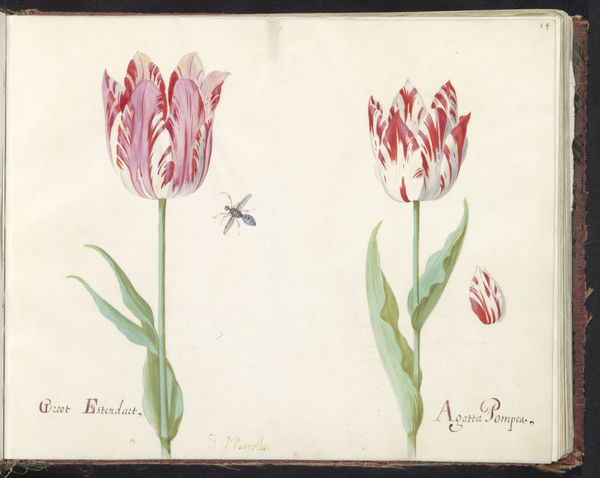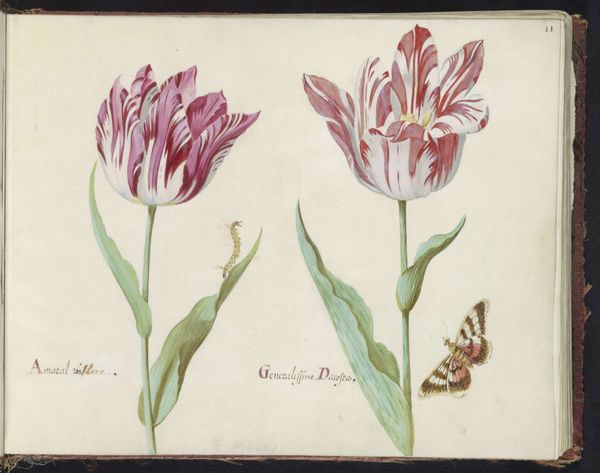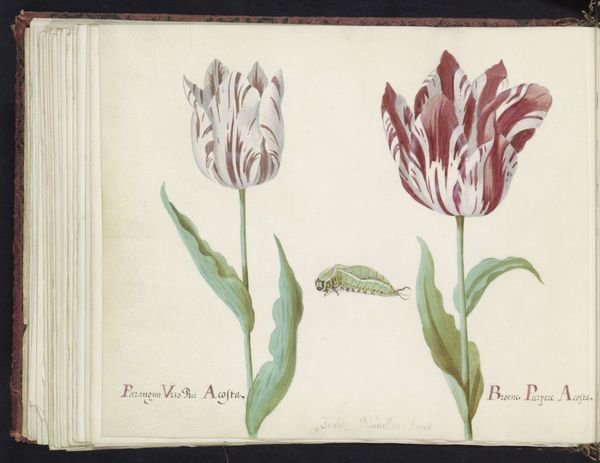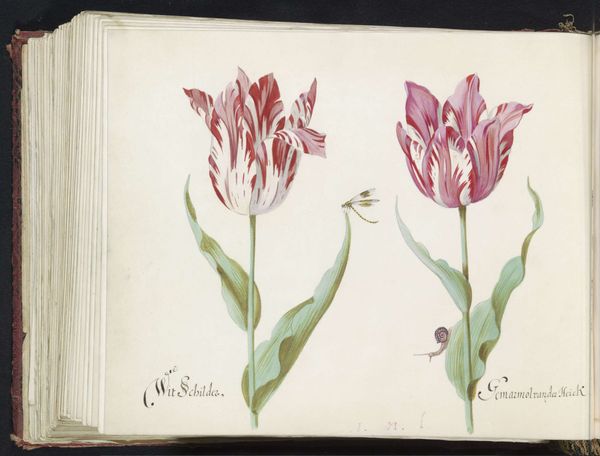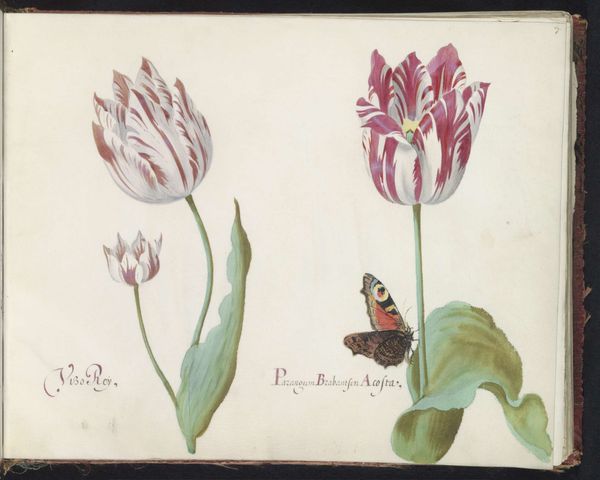
tempera, painting, watercolor
#
tempera
#
dutch-golden-age
#
painting
#
figuration
#
watercolor
#
watercolour illustration
#
botanical art
#
watercolor
Dimensions: height 265 mm, width 335 mm
Copyright: Rijks Museum: Open Domain
Curator: Jacob Marrel's "Two Tulips with Stag Beetle and Butterfly," created around 1637, is a fascinating tempera and watercolor painting, a striking example of Dutch Golden Age botanical art housed in the Rijksmuseum. Editor: Oh, my! The first thing that jumps out is this beetle! I mean, tulips are pretty and all, but the beetle adds a wild, almost humorous, element to this serene flower portrait. Curator: It's precisely that unexpected element that makes this artwork so compelling. During the Dutch Golden Age, tulips weren't just flowers, they were symbols of wealth, status, and even speculative mania, embodying the socio-economic landscape of the time. Editor: Tulip mania! Right, it's like the 17th-century version of Bitcoin, but prettier. These striations— the delicate streaks of color— almost feel anxious. They aren't just showing off some cool flower; they're quietly screaming "luxury" in a very uncertain time, and for me, they just amplify the overall impression of temporality and a slightly sinister wealth. Curator: The inclusion of the beetle and butterfly is not arbitrary; it is a nod to the transience of life, a classical 'vanitas' motif, but positioned within a burgeoning capitalist culture obsessed with surface appearance and ephemeral trends. Marrel’s composition, juxtaposing the meticulously rendered flora with fauna, is subtly critical. Editor: Okay, okay, I get it; a gentle poke at wealth and fleeting beauty. It's like he's whispering: "Enjoy it while it lasts because a bug might just eat your investment!" Now I feel like I need to reread my history books! There’s something here that transcends just simple floral depiction—a playful, almost mischievous awareness of its context. It makes me smile! Curator: Exactly! These artworks encourage us to consider the complex relationships between nature, art, and the socio-political contexts within which they were produced, inviting us to interpret familiar images through fresh perspectives. Editor: Right. Looking closer at the art, I have this incredible sense of this exact moment that Jacob captured centuries ago.
Comments
No comments
Be the first to comment and join the conversation on the ultimate creative platform.
